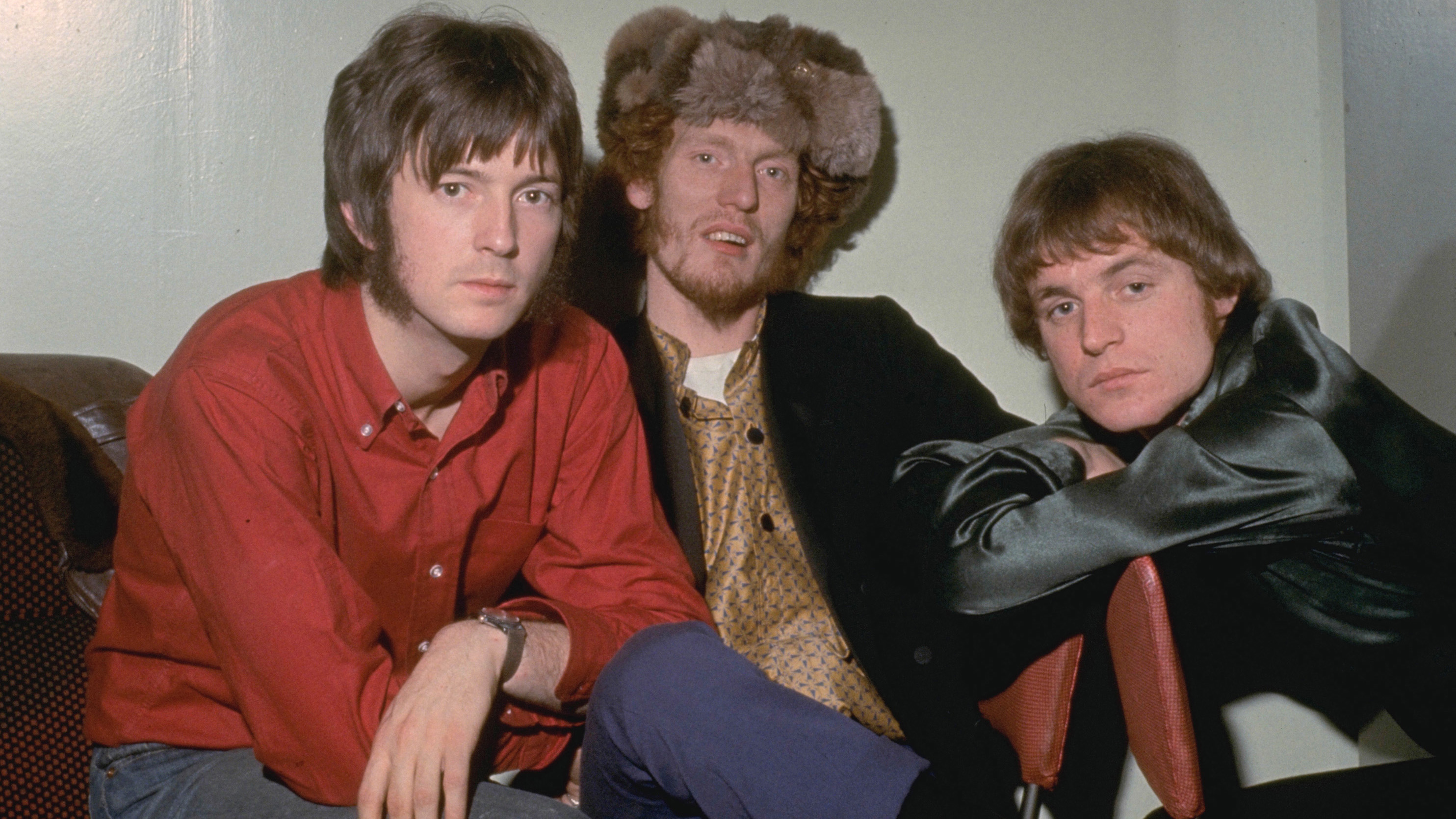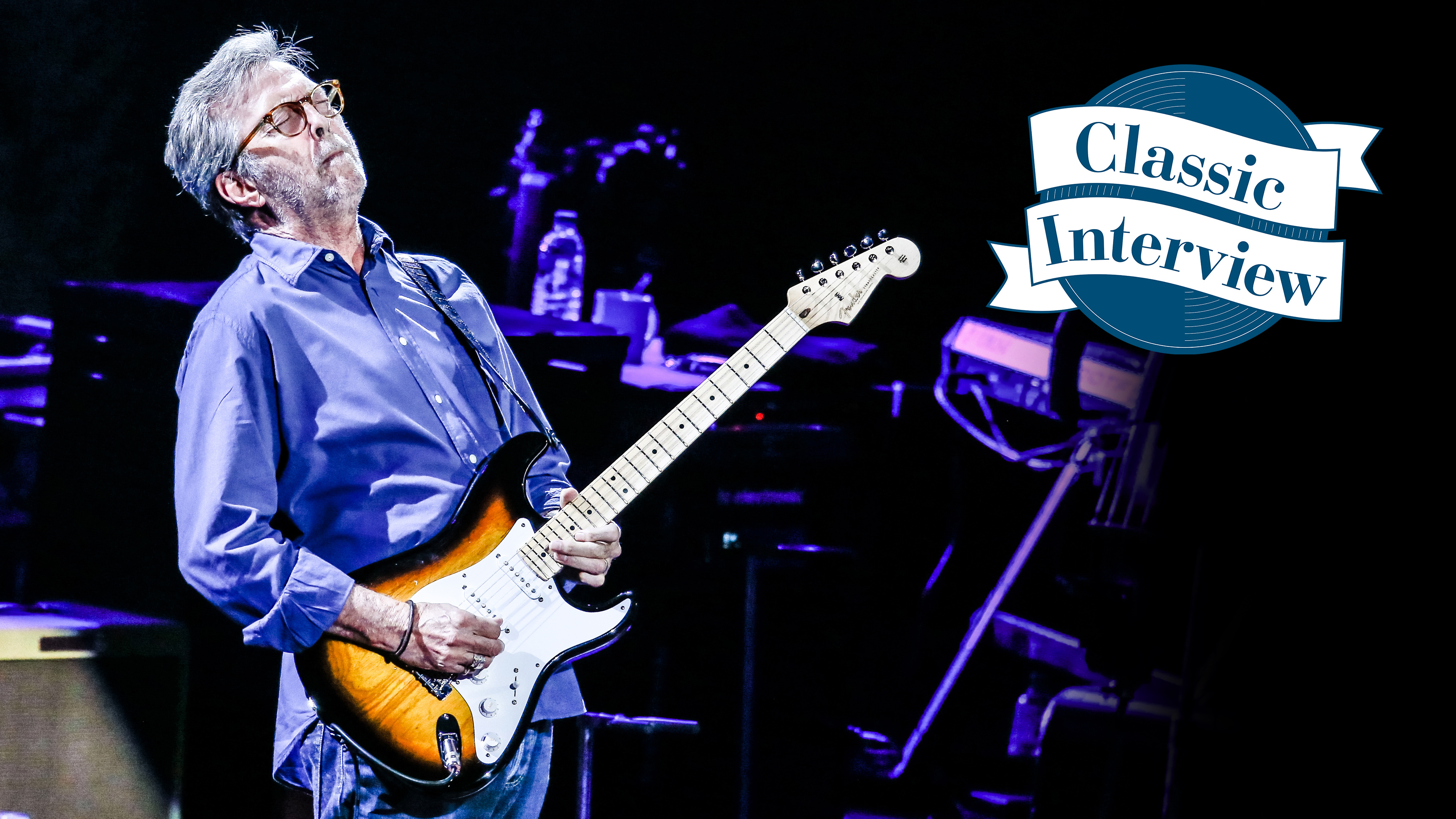“That was just the way it was at that point because Ahmet Ertegun was more or less in love with Eric. He thought Eric should be the frontman”: Cream and the trouble with Strange Brew
The classic opener to Disraeli Gears was never a favourite of Cream's members, and this is why

Bedecked with the eyecatching, trippy, day-glow cover art of Aussie counter-culturalist Martin Sharp, Cream’s second album Disraeli Gears was always going to turn heads when it hit the shelves. Its unique and formidable blend of blues riffing and psychedelic freak-out caught the ears of the world’s record-buying public, too, and made its tracks stand out like purple-red flashes on the radio.
Almost from the moment phenomenal jazz drummer Ginger Baker approached former Yardbird and Bluesbreaker Eric Clapton about starting a band back in mid-1966, Cream – whose line-up was completed by ace bassist, singer and songwriter Jack Bruce – were soon signed up by Robert Stigwood’s Reaction Records label in the UK and Atlantic’s Atco imprint in the US. Their debut Fresh Cream did well on home turf, but only just cracked the Top 40 over the pond.
Disraeli Gears, released in November 1967, speedily eclipsed the success of its predecessor and, aided by the incendiary brilliance of its standout track (and second single) Sunshine Of Your Love, helped make Cream one of the most significant bands of the decade. Strange Brew was not only the long-player’s first track, it also served as the lead single.
Months before that, when Cream were about to lay down tracks for the as-yet-untitled second album, late Atlantic Records chief Ahmet Ertegun knew exactly what he wanted.

“They made the first record Fresh Cream and it was not a tremendous hit and I was kind of disappointed in the thrust of it,” Ahmet said in the Classic Albums: Disraeli Gears documentary. “So, for the second record, they agreed to come to America and record in our studio.”
The first Disraeli Gears recording sessions took place at Atlantic Studios in New York on 3 and 4 April 1967, following Cream’s brief US debut performances at Murray Kaufman’s infamously chaotic promo concerts at the Big Apple’s RKO theatre. The plan was for the three-piece to lay down a single and then to return in May to complete the rest of the recordings.
Ertegun produced the first day’s session himself and, in response to his request for a blues cover, Cream dutifully dished out a version of Hey Lawdy Mama, originally recorded as Oh Lawdy Mama by Buddy Moss in 1934.
Want all the hottest music and gear news, reviews, deals, features and more, direct to your inbox? Sign up here.
“This came from hearing an album that Buddy Guy and Junior Wells did together,” Clapton explained in the Classic Albums documentary. “And he did Hey Lawdy Mama on that but that riff is from another song, I think a Little Walter song called Everything’s Gonna Be Alright. What we did is we took it from shuffle to straight-time… so we took that riff then just [put] the song over that.”
After a few takes, young producer (and future Mountain bassist) Felix Pappalardi entered the Atlantic fray and told Ertegun he thought the track was lacking something. The next morning, Felix returned with a new set of lyrics he’d penned overnight with his wife, Gail Collins, and told the band that these words would fit well over the original Lawdy Mama blues groove.
"It wasn’t solely the lyrics that Pappalardi wanted to change, though – he also persuaded Eric to take over the lead vocal from Jack Bruce. The more poppy, psych-fuelled Strange Brew was born, and Pappalardi was consequently installed as the record’s producer.
It was very much against my wishes but at that moment I had absolutely no power in the band, in the studio“That was just the way it was at that point, because Ahmet Ertegun was more or less in love with Eric. He thought Eric should be the frontman…"
Jack Bruce
“[Felix] took that really from a blues, just a standard 12-bar, and turned it into a kind
of McCartney-esque pop song,” continued Clapton. “I wasn’t that mad [about it] and I’m still not that mad about it, as a form, but I respected the fact that it could be done and he knew how to do it… and, of course, he let me play a guitar solo which was… almost like an unspoken deal that if I gave in and played on this kind of pop song, I could play an Albert King guitar solo.”
“It was very much against my wishes but at that moment I had absolutely no power in the band, in the studio,” Jack Bruce told Guitarist magazine in 2012 regarding the changes Felix initiated. “That was just the way it was at that point, because Ahmet Ertegun was more or less in love with Eric. He thought Eric should be the frontman… Things like that happen in bands. If they’re not manufactured, they don’t always work out the way that the powers that be want them to.”
During the sometimes tense atmosphere of the Disraeli Gears sessions, Cream did manage to stamp their authority in one way, by refusing to use the smaller amps that legendary American engineer Tom Dowd had proffered them. Instead, Jack Bruce and Eric Clapton, who plugged in with his psychedelic paint-daubed ‘Fool’ Gibson SG, insisted on using the amps that gave them such a monstrous live sound.
“There was a particular way of working [at the studio],” Jack Bruce explained in Classic Albums. “For instance, the bass player would use a little Ampeg amp… and it would be the same amp for everybody. So for us to come in with Marshall stacks – [Tom Dowd] wasn’t used to it but he very quickly got used to it.”
“They’re one of the groups that are partially responsible for my not hearing as well as I used to!” added Ahmet Ertegun.
Cream were one of the most important bands of the '60s, helping pave the way for heavier acts like Led Zeppelin and Black Sabbath, as well as inspiring the newly emergent prog rockers with their endless onstage improvisation. But, towards the end of 1968, the band shocked the rock world by calling it a day, partly due to Clapton’s desire to get back to a more pure and ‘honest’ form of blues. Cream achieved more in two years than most bands could ever dream of during an entire career, and their legacy continues to burn bright.
